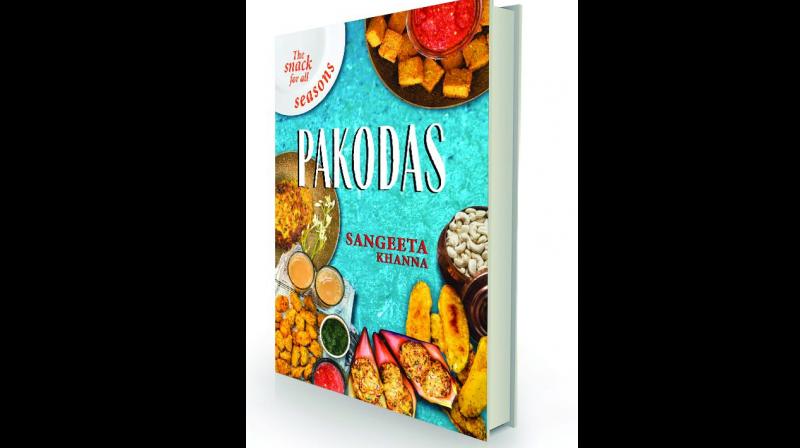All about fritters

Mahua (Madhuca longifolia) is mostly found in central and north Indian plains. Once these tender and pinkish flowers fall from the tree, the locals collect them to make meethi (sweet) pakodiyan. However, sun-dried mahua flowers are also used for cooking several other dishes.
Add ¼ cup of mahua flowers (either fresh or soaked) to a cup of gulgule batter and proceed to make Mahua ki Pakodi.
Bhang (cannabis) leaves are intoxicants and therefore it is advisable that they be consumed in small doses, and preferably along with other dishes. Depending on the availability, fresh or dried bhang leaves are used to make this dish.
Ingredients
(Makes around 25 pakodis)
250g fresh cannabis leaves or 50 gm dried leaves
200 ml mustard/peanut oil
For the batter
¾ cup besan
¼ cup rice flour
½ tsp carom seeds
½ tsp turmeric powder
1 tsp green chilli paste or ½ tsp red chilli powder, or to taste
½ tsp garlic paste (optional)
¾ tsp salt
½ cup water
Method
Roughly tear the leaves of fresh cannabis. In case of dry leaves, crush them. Mix with batter ingredients. Heat the oil to medium-hot.
Scoop out spoonfuls of the batter to make bite-sized pakodis. Drop into the oil and fry until crisp and golden-brown.
Serve hot with coriander chutney.
This recipe was given to me by a friend in Hyderabad, Laxmi Nadendla. Cashew pakodas are much preferred during long journeys, particularly when travelling by train.
Ingredients
(10–12 servings)
250g cashew nuts
¾ cup besan
½ tsp turmeric powder
10 sprigs of curry leaves
2 tbsp green chillies, chopped
2 tsp red chilli powder, or to taste
1 tsp salt
½ tsp pepper
2 tbsp oil for the batter
300 ml peanut oil
Method
Mix cashew nuts, besan, powdered spices, curry leaves, green chillies, salt and pepper in a wide bowl. Add ½ cup water and mix with fingers. Sprinkle some extra water than what is recommended to coat the cashews well. Heat 2tbsp of oil, pour over the mix and blend.
Heat the oil to medium-hot. Drop the cashew nut mixture into the oil while ensuring that each pakoda stays separate.
Keep frying the pakodas until they become golden-brown. Remove from oil and drain on paper napkins.
Fish roe make wonderful pakodas and have a delicate texture. This is a delicacy in Bengal and is known as machher deemer bora; in UP and other parts of central India, it is known as machhli ke ande ki pakodi.
Ingredients
(Makes around 8–10 pakodas)
200g fish roe
¼ cup besan
½ cup onions, chopped
2 tbsp green chillies, chopped or to taste
3 tbsp fresh coriander leaves, chopped
(optional)
½ tsp turmeric powder
¾ tsp salt
150 ml mustard oil
Method
Prick the sac of the fish roe and remove the thin membrane.
Transfer it to a mixing bowl, add all the other ingredients, except the oil, and mix with fingers, removing any tough veins or membranes.
Heat the oil to medium-hot in a flat frying pan, keeping its level to about an inch. Scoop out a spoonful of the roe mix, shape into round pakodas and drop into the oil. Turn the pieces once and cook until they become crisp and golden-brown. Remove from oil with the help of a slotted spoon and place them on a plate lined with a kitchen towel.
Serve hot with a chutney of your choice and onion rings.
Published with permission from Westland

